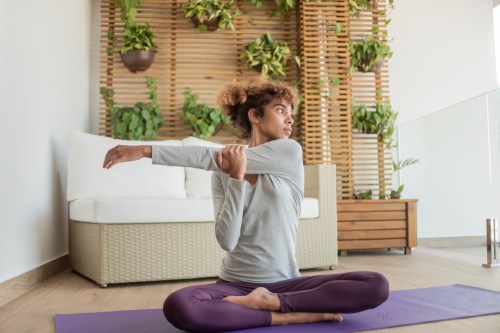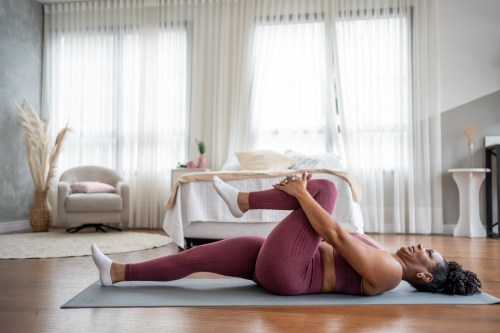Our editors independently select these products. Making a purchase through our links may earn Well+Good a commission
Leg day, or no way? Here’s how to tell if you’re *actually* too sore to work out
The four questions to ask yourself if you're wondering whether or not you're too sore to work out, according to an orthopedic surgeon and a trainer.

Waking up the day after a particularly grueling workout with a super-sore bod is bittersweet. You’re probably stoked that you #crushedit during your latest sweat sesh, but you’re seriously wondering whether you’re too achy for that tempo run scheduled to start in 30 minutes. Well, according to Victor Romano, MD, an Illinois-based orthopedic surgeon who specializes in sports medicine, discerning whether you should tough it out or opt for a much-needed rest day really comes down to understanding your actual symptoms and how to best treat them.
“In general, I recommend having at least one rest day per week,” says Charlee Atkins, founder of Le Sweat. “If you can’t get yourself to fully ‘rest’ for a day, then at least make your recovery active. Meaning, if you feel the need to move, go swimming in the ocean, play tennis, take a walk in the park, [bike] ride around the city.” Occasionally, however, you’ll have to make a judgement call that goes beyond “today is my rest day.” Below, Atkins and Dr. Romano share exactly how to give yourself a quick checkup before ultimately lacing up your sneakers or declaring a self-care workout hiatus for recovery.
Ask yourself these four questions if you think you’re just too sore to hit the gym.

1. Is anything swelling up?
While Dr. Romano says sore or stiff muscles are A-okay to get you through a workout, swollen limbs are not. “Swelling and warmth in an area is evidence of an injury,” he explains. “Your body is trying to heal itself. Let it.” To do so, he recommends following a simple recovery acronym, RICE, which stands for rest, ice, compression, and elevation.
To heal swollen limbs, follow the acronym RICE: rest, ice, compression, and elevation. —Dr. Victor Romano
“If necessary, an over-the-counter anti-inflammatory like ibuprofen or naproxen can help too,” he adds. And if you’re not a fan of pills, the doc says that a topical arnica cream can also do the trick.
2. Do I have motion in all my joints?
“Loss of motion in a joint, as well as catching, locking, or [muscles] giving out is a problem,” Dr. Romano explains. “Since cartilage has poor blood and nerve supplies, there is a delayed reaction between injury and pain—perhaps several hours or overnight.” So if you quickly transformed from the Hulk to a rickety skeleton, there’s a reason. When your body can no longer bear its own weight, Dr. Romano says something’s definitely awry. If you have any of these symptoms, the best practice is to skip spin class and head straight to your doc.
3. Are certain parts of my body compensating for others?
According to Dr. Romano, “where you have pain is often not the source of your injuries.” Rather, you usually get hurt as a result of your body compensating for weaker areas of your training plan. Thus, if you begin to notice imbalances during your, say, 10K prep or bear all the weight on one side of your downward dog in yoga, you might consider addressing the problem before it becomes an injury.
Switch up your workout as much possible to keep your body guessing and engaging different muscle groups, Dr. Romano says. “I recommend one day of endurance, strength, and interval training each per week, as well as one day of stretching. Two to three days per week of rest is good.”
And, if you answered “no” to all three questions, you’re definitely all set to sweat.
4. Am I emotionally down for this workout?
“More often than not, a terrible mood is a great way to assess whether or not you have been working on working out a little too much,” says Atkins. If you’re feeling stressed, anxious, angry, or unmotivated about your scheduled workout, that might be your body’s way of communicating that it needs some extra time off. Listen up.
This story was originally published on July 30, 2018. Updated on June 14, 2019.
For rest day purposes, here’s how to turn your bathroom into the ultimate recovery zone and the best sporty-chic outfit for staying in.
Sign Up for Our Daily Newsletter
Get all the latest in wellness, trends, food, fitness, beauty, and more delivered right to your inbox.
Got it, you've been added to our email list.










